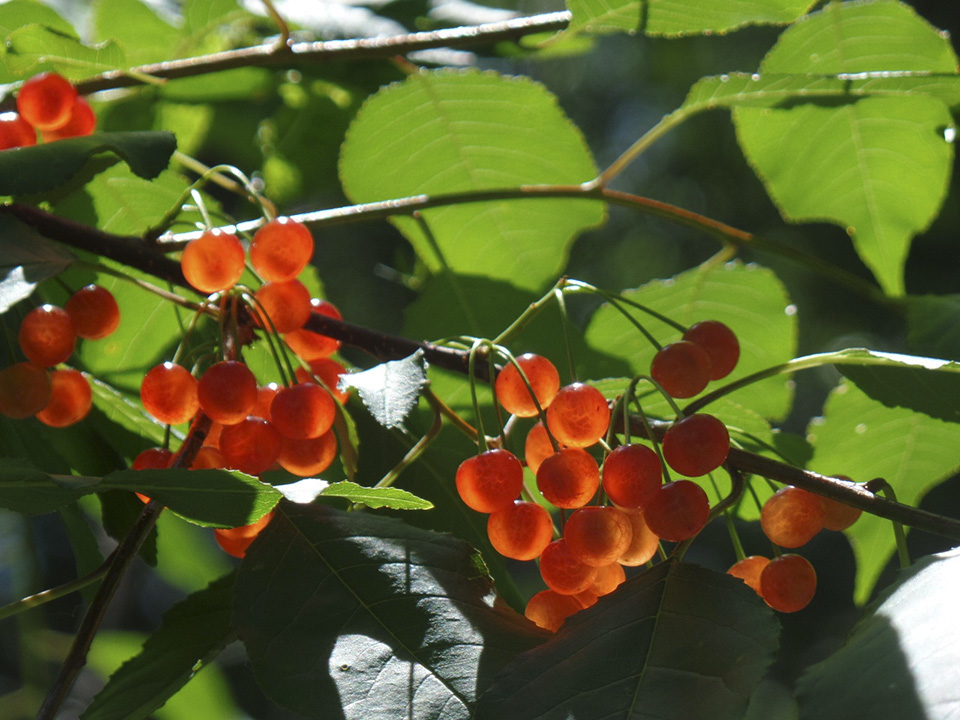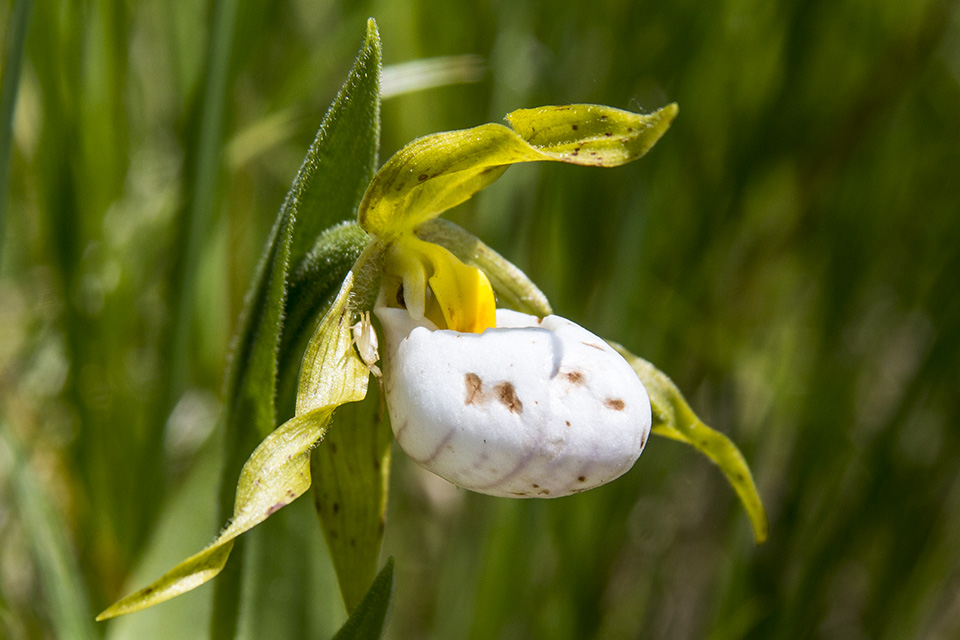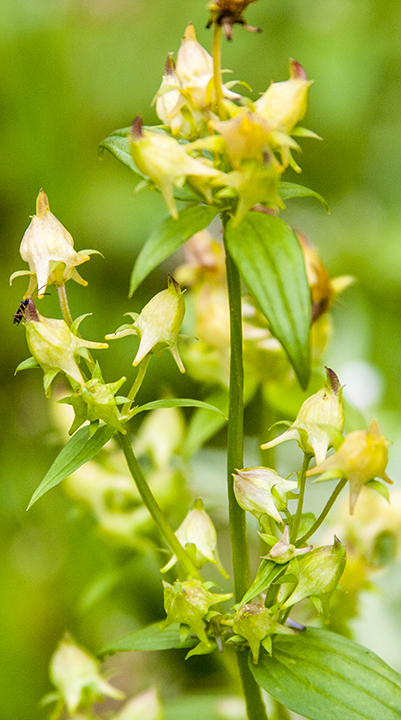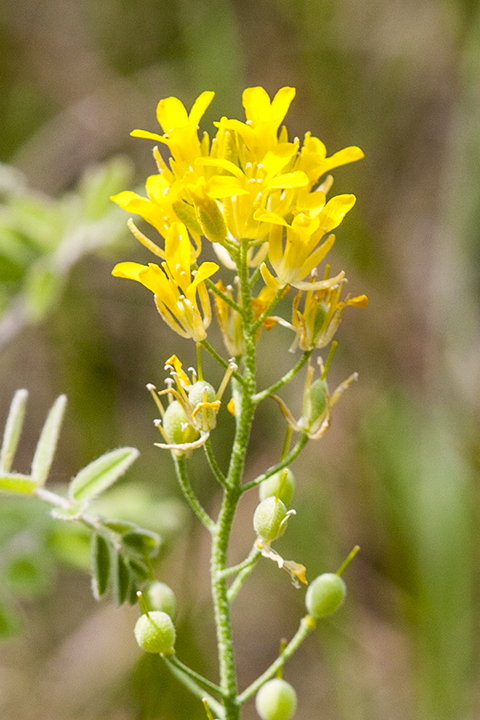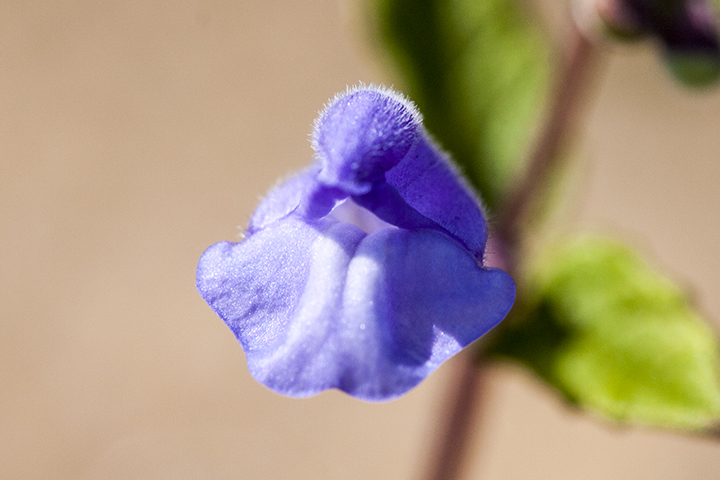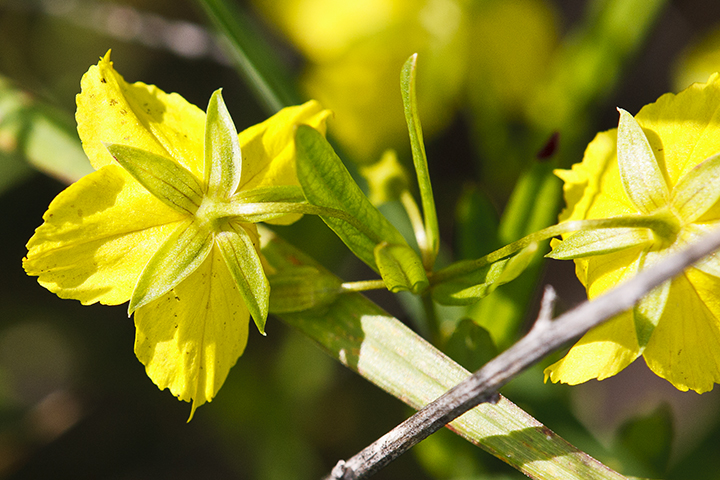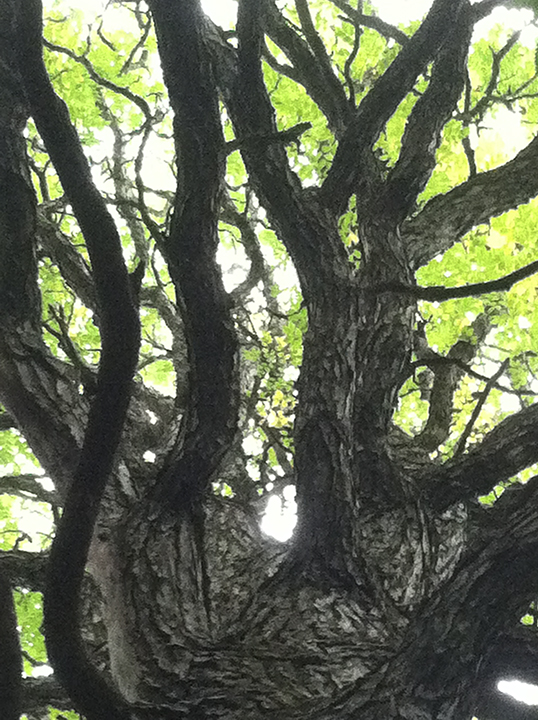Pin cherry (Prunus pensylvanica) is a small, fast-growing, short-lived, deciduous tree. It is common from New England to the upper Midwest and across southern Canada, uncommon and scattered west of the Great Plains. It is common throughout Minnesota except for the southwest quarter.
Pin cherry reproduces mostly by root sprouts and often forms thickets. In forests, it rarely germinates, and when it does, the saplings rarely survive except in large openings with plentiful moisture and light. Seedlings mostly appear in a forest after heavy cutting, burning, or a blow down. They mature rapidly and live only 20 to 40 years.
Pin cherry can easily be mistaken for black cherry or American Plum. Unlike black cherry, the bark remains thin and smooth on mature trees; the leaves are yellowish-green, not dark green; the leaf tips are drawn out into a long thin point; and the inflorescence is an umbrella-shaped cluster of 2 to 7 flowers, not a 3″ to 6″ long cluster of 20 to 60 flowers. Unlike American plum, the branches do not have spines, and the inflorescence often has clusters of 5, 6, or 7 flowers.

